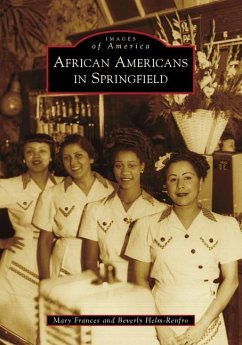"Springfield became the capital of Illinois due in large part to Abraham Lincoln - lawyer, politician, and president. Lincoln lived in Springfield from 1837 to 1861, and during the decade after his departure, the African American population in the city quadrupled. Although Springfield was dominated by railroads, coal mines, and government, African Americans also worked as doctors, dentists, lawyers, professors, politicians, public school teachers, firemen, insurance agents, entrepreneurs, soldiers, military officers, police officers, state troopers, artists, inventors, secretaries, cooks, laborers, car salesmen, and church leaders. After the Springfield race Riot of 1908, the city became less welcoming for African Americans. Shortly after, however, the National Association for the Advancement of Colored People and the National Urban League were formed. Further gains under Dr. Martin Luther King Jr.'s leadership were made during the civil rights movement."--Back cover.
Hinweis: Dieser Artikel kann nur an eine deutsche Lieferadresse ausgeliefert werden.
Hinweis: Dieser Artikel kann nur an eine deutsche Lieferadresse ausgeliefert werden.








